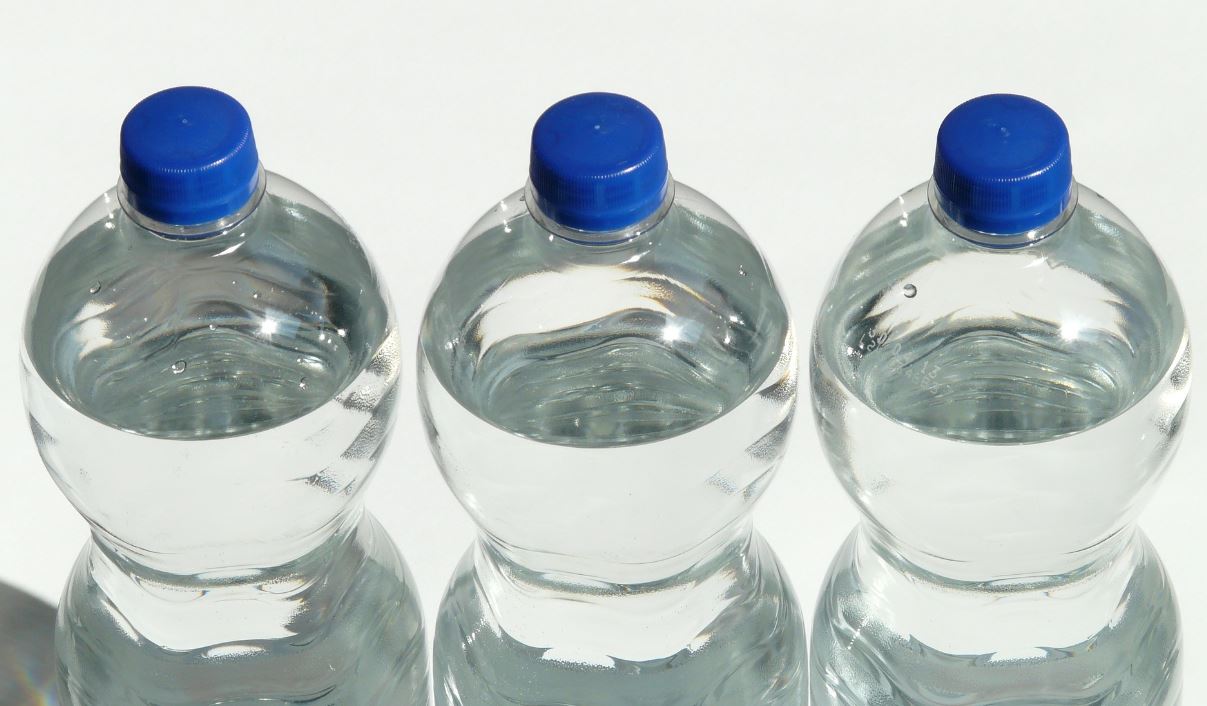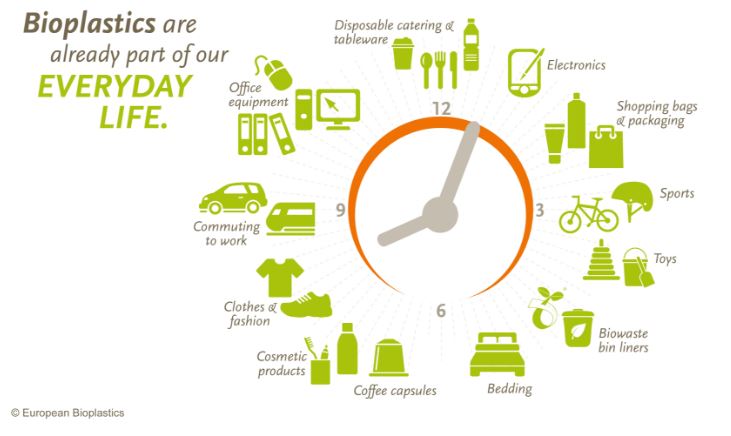6 Common Applications of Bioplastics
July 19, 2018

Bioplastics can greatly reduce our dependence on fossil resources – which are significantly more harmful to the environment than bioplastics. So, it’s no surprise that you can expect to see a surge in the production and use of bioplastics in the coming years.
Bioplastics are produced from renewable resources such as corn oil, sugar beet, sugar cane, grass and plants. There has been extensive research and publicity around the damage traditional plastics are doing to the environment so the fact that bioplastics are produced from renewable resources and degradable materials means that can reduce pollution in a very real way. Soon a whole variety of day-to-day products will be manufactured with bioplastics; including the things you might expect like packaging and food-services products but also components in consumer electronics and automotive components.
In this short article we are going to outline 6 common applications for bioplastics…..

Bioplastic Packaging
In relation to the production of packaging, conventional plastics are being replaced by bioplastics at a rapid pace. There’s a big demand for bioplastic packaging and it is the largest segment of the European bioplastic market – estimated at around 44% of 2.05 million tonnes in 2017.

Bioplastic packaging options include bags for compost, agricultural foils, horticultural products, nursery products, toys and textiles. They are also often used for disposable cups, salad bowls, plates, clingfilm and food containers.
The development of sophisticated bioplastic packaging for food products has greatly improved the shelf life of the food and its use helps brands to connect with their customer’s by showing they are conscious of their environmental footprint. However, the vast majority of current packaging still comes from traditional plastics and ends up in landfills – which is a situation that governments intend to address and reverse. (Also for this motive, many companies are looking at antimicrobial additives for plastics as an approach to this issue)
Bioplastics provide an alternative approach to packaging and are a real solution to the need for a reduction in conventional plastic use and waste. Plant based polymers are able to fully compost at the end of their useful life.
It’s relatively easy for manufacturers to produce bioplastic packaging because packaging made from biopolymers can usually be produced using standard plastics processing technology – so no special equipment is needed. There’s everything to gain and no real downside in this context so this switch to bioplastic packaging is set to impact all out day-to-day lives – for the better.
Interested in learning more about bioplastics and their benefits? Here’s what you need to know……
Bioplastics for Consumer Electronics
The electronics industry has made big strides in tackling its environmental impact, largely through producing more energy efficient devices and through more efficient recycling options for electronic waste. Most recently it has started to address the sustainability of the materials it uses in its products.
Bioplastics provide the electronic industry with an excellent opportunity to improve their environmental credentials as they can be injection moulded with similar characteristics to traditional plastics without modifying any machinery.
Electronical product casings, circuit boards and data storage are all traditionally made from oil-derived plastics – and the plastic helps keep the products lightweight and durable. So obviously there’s an opportunity to switch these components over. But there’s plenty of other opportunities too, including touch screen computer casings, loud speakers, headphones, keyboards, mobile phone casings, laptops, games consoles and vacuum cleaners.
Obviously, the nature of electronics is more complex than packaging and because plant derived bioplastics are generally processed at a lower temperature than traditional products – in the past there were issues in relation to poor temperature resistance. This caused a bit of a barrier for electronic applications. However new technology has produced some big advancements in this area – improving temperature resistance – as a result bioplastic a now a suitable alternative for many components produced by the electronics industry.
Food Service
Grabbing food and drinks on the go is increasingly popular for people with busy lifestyles but with it comes increased waste – that needs to be disposed of responsibly.
Bioplastics are helping to reduce the impact of this waste on the environment and are being used in applications such as thermoformed coffee cup lids, injection moulded disposable cutlery and plates along with food containers of all shapes and sizes.
Medical
Nontoxic biodegradable bioplastics sutures, commonly referred to as stitches, are now being used by medical professionals in hospitals and surgeries. They are easy to sterilise, robust and remain in place until the tissue has healed at which time they are the dissolved by the body leaving no marks behind.
Biodegradable plastics are also being used for medical devices. For example, pins, tacks and screws which are used to help bones heal and during reconstructive surgery are being produced with bioplastics.
Dentist are also getting on board and are using bioplastics for dental implants that fill in the hole that remains after a tooth has been extracted.
Containers for tablets and creams can also be produced using bioplastic. As with standard medical products bioplastic components can be manufactured in a controlled and dedicated white room moulding cell – Key Plastics have these facilities with an iso 7 clean room. (Full details on What is a cleanroom)
Aerospace and Automotive
Transport is considered to be one of the greatest contributors to carbon emissions on a global scale. The aerospace and auto industry are examining how they can design more sustainable vehicles that cause less of an impact. The shift in these industries is being led by both governments and consumers and new products such as hybrid cars are one of the most exciting developments.
Both industries invest a significant amount of resources investigating how they can reduce the weight of their vehicles so that fuel consumption and emissions are lower, and plastics are often a solution.
Safety and performance are two crucial factors for both markets. The good news is that bioplastics can perform to the same standards as their traditional plastic counterparts. We mentioned earlier that plastic components used in electronic products need to have strong temperature resistance and this is also true of components produced for the aerospace and the automotive sectors. So now that high performance is possible in terms of temperature control – with bioplastic – we are going to see a big leap in the use of bioplastic components in these sectors.
Cosmetics
The cosmetics industry is another big producer of packaging for its products. Many of these products have a short life span once disposed of they end up in landfills. When you consider the impact disposable products such as toothbrushes, hairbrushes, cotton buds and razors are having – it’s no wonder that brands are starting to look towards alternatives.
This market is heavily consumer focused and today’s shoppers expects certain standards from the brands they use. Bioplastic alternatives enable brands to satisfy this requirement without impacting on product quality.
Even small parts of cosmetic products such as bioplastic caps can be injection moulded.
Learn More
We hope this article has opened your mind to some of the possible applications for bioplastics – it’s an opportunity we can all embrace. To find out more about the possible applications for your own organisation – please contact a member of our team.



